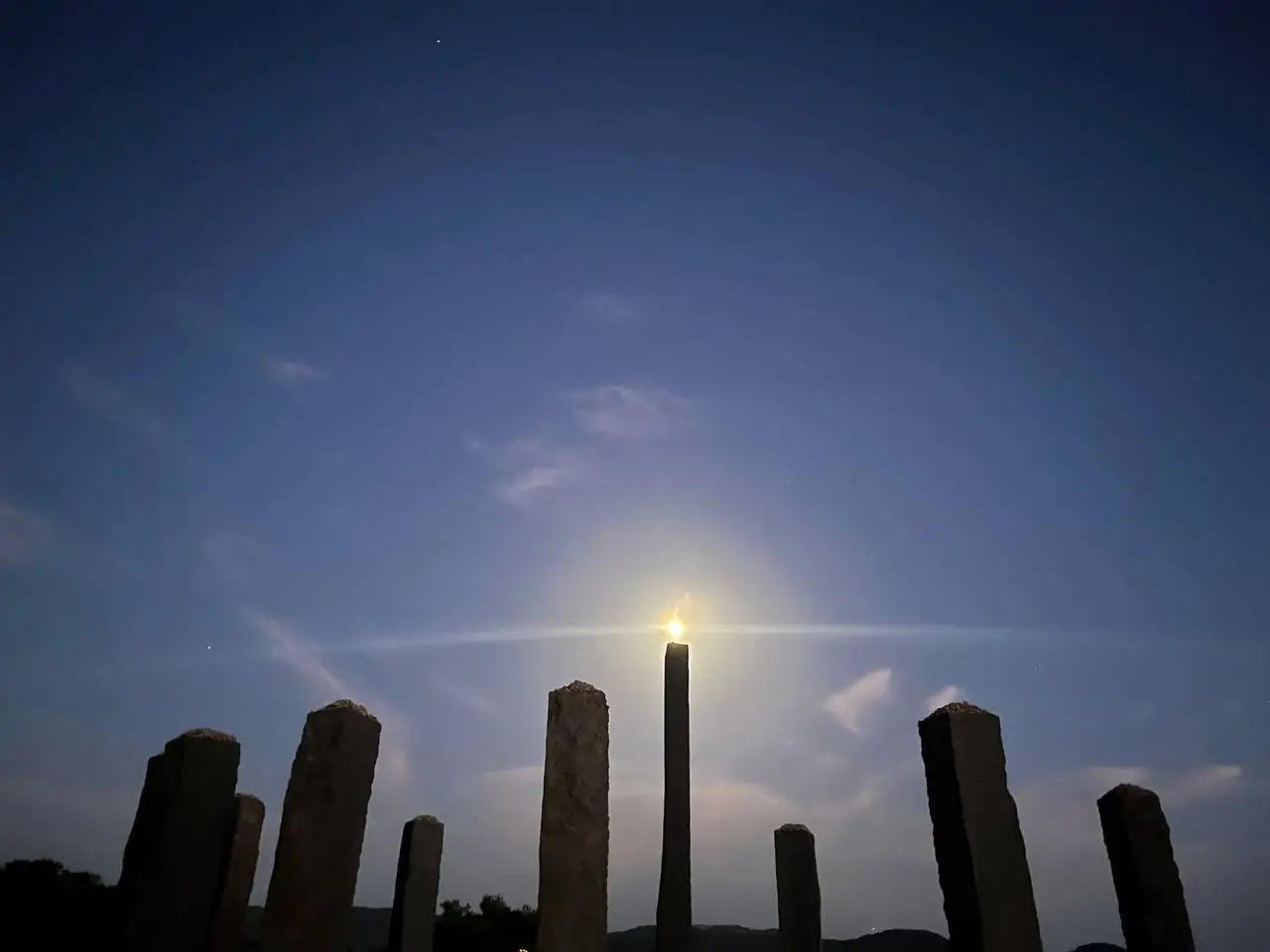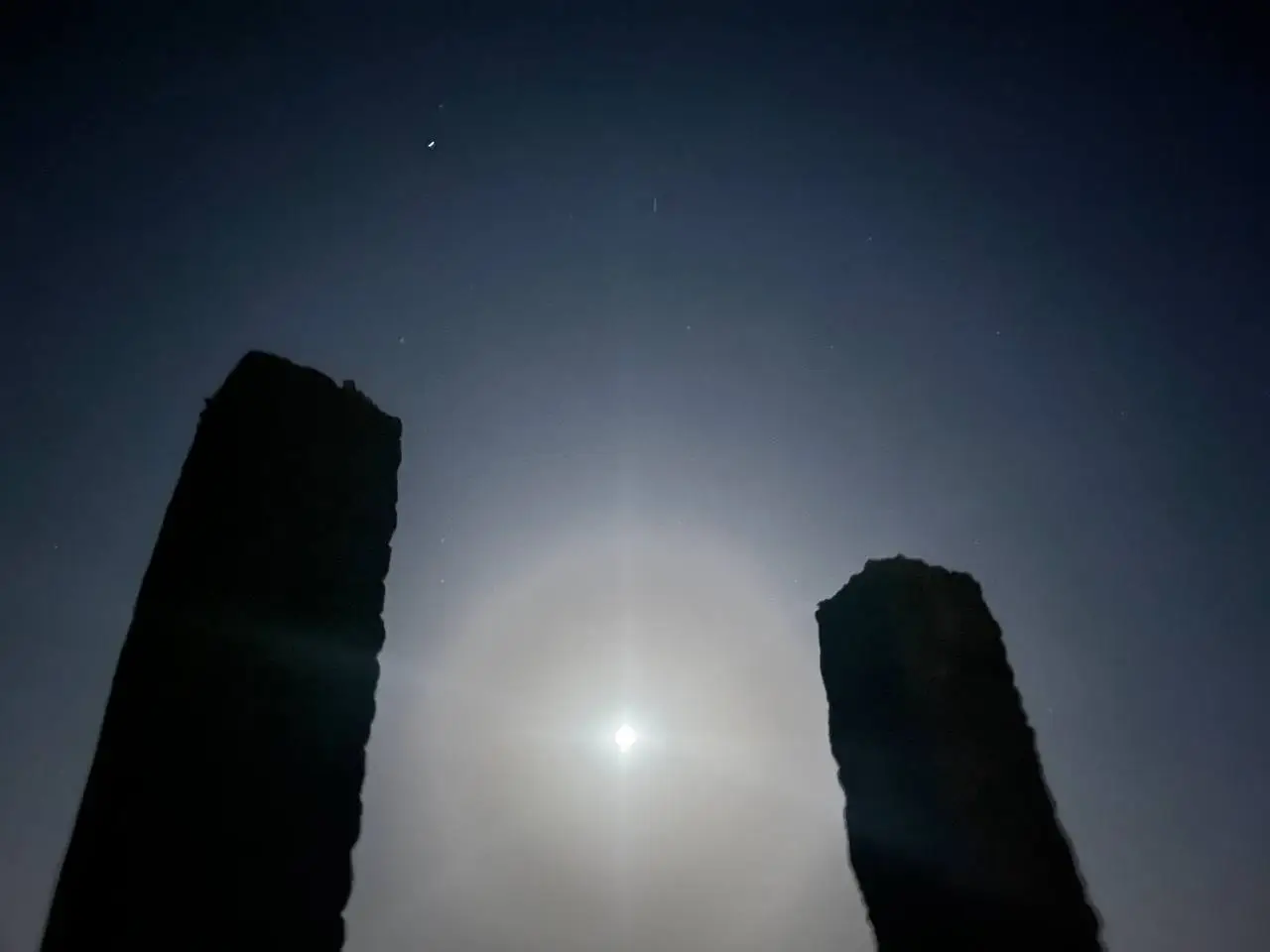Some places defy words. They demand presence. Time and Space – The Speed of Light is one such place. On Ibiza’s western shore, this modern megalithic circle stands like a celestial marker, carved not by the ancients, but by human hands in 2014. Created by land artist Andrew Rogers and commissioned by Cirque du Soleil founder Guy Laliberté, its towering basalt columns evoke the sacred geometries of Stonehenge, the standing stones of Stenness, and the cosmic cycles they sought to measure.
This monument was designed to be seen not just from the ground, but from the air—its full scale best appreciated from above. Perhaps this idea resonated with Guy Laliberté, who, in 2009, became the first Canadian space tourist, orbiting Earth aboard the International Space Station. After seeing the world from above, did it make him want to mark the Earth with something that spoke to the heavens?
“The universe cannot be read until we’ve learned the language and become familiar with the characters in which it was written,” Galileo once observed. “It’s written in mathematical language, and the letters are triangles, circles, and other geometrical figures.”
Galileo Tweet

This place makes you think about time. It feels like a giant clock, calibrated to the movement of the planets. The shadows between the stones shift, stretching and shrinking as the day unfolds.
The stones are still, but everything around them moves. Light shifts, shadows lengthen and fade, the sea rises and falls. The sun plays tricks on the basalt, pulling flashes of red and streaks of gold from its dark surface.
The universe doesn’t measure itself in minutes and hours—it stretches, bends, warps. The sun’s light takes eight minutes to reach us. The stars above? We see them as they were long ago, their light still traveling across time to reach us.
It’s not just the stones that make this place strange and beautiful. It’s where they stand—on a rugged stretch of Ibiza’s western shore, where the land ends and the sea begins. That line, the horizon, feels like a threshold between worlds.
For centuries, the Phoenicians, Romans, Arabs, and Catalans have walked these shores—each civilization drawn to this place, each leaving something behind. What did they see when they looked out over this endless expanse? Did they feel the same pull, the same longing to know what lies beyond?

The hidden language of Time and Space is mathematics. Its design is inspired by the Fibonacci sequence, the pattern that governs the growth of galaxies, hurricanes, seashells, and sunflowers:
1, 1, 2, 3, 5, 8, 13, 21, 34, 55, 89
Each number in the Fibonacci sequence is the sum of the two preceding it, suggesting that growth is not linear but continuous, connected, and always evolving from what came before.
The spacing of the stones follows this ratio, echoing the patterns of the natural world—subtly creating a sense of harmony we feel, even if we don’t immediately recognize it.
Can Frare is either happy to suggest a clear detailed route for you, aided by software like View Ranger or Wikiloc, or to organise a guide to take are you on a memorable outing in Ibiza.
Who was Fibonacci?
Born Leonardo of Pisa, Fibonacci changed the course of European mathematics. His 1202 text Liber Abaci introduced the Hindu-Arabic numeral system (0–9) to the West, replacing the cumbersome Roman numerals that had long hindered complex calculations. Imagine trying to subtract XXC from CL—or multiply V by C—it’s no wonder Fibonacci’s ideas transformed the way the world measured, traded, and built.
But Fibonacci was not a lone genius. His work was a continuation of knowledge passed through generations—from Indian mathematicians like Brahmagupta (590–670), to Arabic scholars like Al-Khwarizmi (whose 9th-century text Al-Jabr gave us the word “algebra”). Fibonacci did not pioneer these thoughts; he was a relay in a giant transmission of mathematical ideas from the ancient Greeks to Indian scholars, to Baghdad, and finally, in the 12th century, back into Europe.
Mathematics has always been a universal language, moving forward through transmission and adaptation. Like the Fibonacci sequence itself, each step builds upon the knowledge of those who came before.
This idea—that wisdom is carried forward, built upon, refined—feels fitting here. Time and Space is a contemporary monument, yet it speaks to the same human instinct that built Stonehenge: the desire to measure the infinite, to understand our place within it.
For those looking to experience Ibiza beyond its beaches, Time and Space is a perfect setting for sunset meditation or yoga—a moment of stillness at the edge of the world.
These stones don’t offer conclusions; they invite reflection.
Photos by Deborah Arpino
© Copyright 2025 Can Frare Ibiza